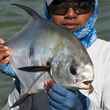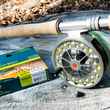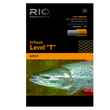Sploosh!
A crater in the river’s surface formed just a dozen feet off the bank behind the boat, and my head swiveled on my shoulders. Strong rings emanated from the source of the commotion, and my mind raced.
Of course, in such an instance, you want the racket to be the product of an amped-up and still-hungry smallmouth hunting in the shallows, but they rarely exhibit such recklessness when feeding on natural, surface-trapped food, particularly in the bathwater of summer’s peak. The answer is in the trees.
The more time I spend on the river, and the more intimately familiar I become with the twists and turns and the rocks and the the trees, the more adept I’ve become at reading the riparian zone for potential benefits, and anticipating that always-arresting surface explosion. On most Virginia rivers, you only need to know two tree species to be able to identify most of the trees you’ll tuck lures and flies under, but becoming fluent in a few others will put food on your table.
The mighty sycamore is probably the most common river tree, with wide, triple-pointed leaves that make an unmistakable and sharp thwack! when struck by a topwater bug propelled by high line speed. Their bark is scaly, and flakes off the trunk in small pieces to reveal a whitish cambium, which can be finely milled without breaking. Follow the New River downstream far enough, and you’ll find people who call the same tree a “buttonwood” for the valuable product their wood is so useful in crafting.
More Like This
These days, I could likely identify that unfortunate sound of a fly thwacking a broad buttonwood leaf in a matter of seconds if I was awoken by it in the middle of the night, as it peppers nearly all of my summertime waking hours. But the silver lining is that the broad, papery leaves do well to trap an off-target fly before they penetrate the branch, and a stiff backcast will usually free it, if you’re using the tippet you should be. Spot a buttonwood with a gnarly root system that reaches close to or below the river’s surface, and you’ve likely already got the jump on a smallmouth, as the shade, overhead cover, and ambush opportunities they provide make them exceptionally valuable to big, old smallmouth.
Probably the second most common riparian species is the box elder, which sports leaves that bear a rough resemblance to poison ivy. In fact, before I knew otherwise, a friend of mine once told me that one of those trees had been parasitized by poison ivy, which forced its own leaves out of the limbs of the tree. I didn’t buy it, and my consequent research is what taught me its real name. Box elder is of the genus Acer—the maples—a fact that’s betrayed by the samaras it sometimes sports well into the summertime.
Box elders don’t live a long time. They don’t get very big, and their wood is quite soft, making it relatively useless as lumber. This short life and weakness is a strength for our smallmouth rivers, though, as they contribute woody debris to the riverbanks at a high rate, blocking flow and providing ambush cover. A submerged box elder log rooted in the bottom of the river adjacent to a clay bank full of crayfish burrows is like the corner of a dimly-lit back alley next to a bar for big smallmouth, and should be recognized as such.

But the cause of the commotion in the water, most often, is neither box elder nor sycamore. If it’s late summer, black walnuts are typically to blame, and, thankfully, the trees are easy to identify. On the river, walnuts generally grow tall and slender. The bark is cut by deep ridges, and the compound, feather-shaped leaves sport several teardrop-shaped leaflets, arranged opposite. An exciting sploosh! in the river means the tree is bearing nuts. A dull thud in the floodplain means you can collect and eat them.
A smaller thud in the floodplain, if it’s late summer and you’re enjoying some of the best topwater smallmouth fishing of the year, may betray a number of nut trees. Hopefully, it’s an ancient hickory, bushy with ovular leaves a shade between summer green and autumn gold.
At this point in the year, if I’m floating off the clock, I stow my 20 gauge and a handful of #6 shells in my boat box and keep an eye out for the ovular leaves and the heavy bouncing of a hickory limb. Early season squirrels can’t resist a hickory nut, and when the nuts are still fastened to the tree, squirrels are prime targets to be picked off from the boat, and every one harvested gets me closer to a squirrel pie.
If you’ve formed a habit of observing the banks of the river, not just for fish and fish habitat, but for the tree species and the bounty they offer, a silent and less common species should be on your radar.

The largest edible fruit native to North America grows in our forests, often along the riverbank, and it often goes unnoticed. Its foot-long, glossy, green leaves usually give it away first, as the small tree sometimes looks out of place, and it kind of is. A large, green, potato-shaped fruit hanging from the canopy gives it away as a pawpaw, a deciduous representative of a largely tropical family. Give the trunk a shake and collect what falls. If you enjoy the likes of mangos and bananas, an armful of pawpaws will engrain the location of that tree in your mind for summers to come, and keep your eyes glued to the riverbank throughout the month of September.
Just remember to keep at least half an eye on your popping bug.































Comments